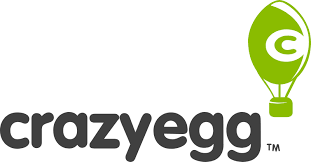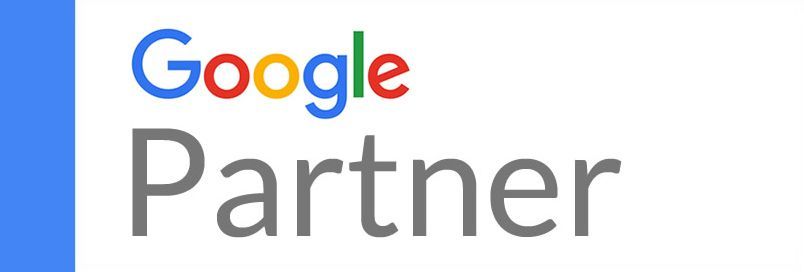
Using Heat Mapping To Improve Paid Ads and Landing Pages
So…What is Heat Mapping?
Heat mapping in advertising refers to the practice of using heat map technology and data visualization techniques to analyze and understand user interactions with ads. It provides you with valuable insights into how users are engaging with your ads; ie what they are looking at, what they are clicking on, etc. It can help you make data-driven decisions to optimize your ad campaigns for better results. There are all different types of heat maps:
- Click Heat Maps
- Scroll Heat Maps
- Mouse Movement Heat Maps
- Attention Heat Maps
- Conversion Funnel Heat Maps
- Segmentation and A/B Testing
How Does Heat Mapping Work?
Heat mapping is a valuable tool that can help home services businesses optimize ads and landing pages in several ways. Used correctly, it can help you gain insights into user behavior, optimize ads and landing pages, and ultimately improve the effectiveness of digital marketing efforts. By leveraging this data, you can create more user-friendly, engaging, and conversion-focused online experiences.
Understanding User Behavior
Heat maps provide visual representations of how users interact with your website or landing page. They show where users click, move their mouse, and scroll. This data helps you understand which elements on the page are receiving the most attention and which are being ignored.
Identifying High-Impact Areas
Heat maps can pinpoint the "hot spots" on your landing pages, which are areas with the most user engagement. These areas are prime locations for placing important information or calls to action (CTAs). For a home services business, this could be a prominent "Get a Quote" button or contact information.
Optimizing CTA Placement
By analyzing heat maps, you can determine if your CTAs are placed in optimal locations. If users aren't clicking on your CTA buttons, it may be time to move them to more prominent positions based on the heat map data. Or it may indicate you need to change your CTA.
Content Prioritization
Heat maps can show you which content or images are capturing the most attention. This helps in prioritizing content, ensuring that the most important information is placed where users are most likely to see it.
Scroll Behavior
Understanding how far users scroll down your landing page can help you decide where to place critical information. If users rarely reach the bottom of the page, you might want to move essential content closer to the top.
Identifying Problematic Areas
Heat maps also reveal areas of your page that receive little to no user engagement, indicating potential issues. You can then investigate these areas to understand why users are avoiding them and make necessary improvements.
A/B Testing
Heat maps can inform A/B testing efforts by showing you which version of an ad or landing page design performs better in terms of user engagement. You can make data-driven decisions about which variations to implement based on the heat map results.
Mobile Optimization
With the increasing use of mobile devices, it's crucial to analyze heat maps specifically for mobile users. This will help ensure that your mobile ads and landing pages are optimized for touch interactions and small screens.
User Experience (UX) Enhancement
Heat mapping can be used to identify usability issues, such as users clicking on non-clickable elements. This data can guide UX improvements to make the user journey smoother.
Cost-Efficient Ad Spend
By optimizing your landing pages and ads based on heat map insights, you can improve the user experience and conversion rates. This can lead to a more efficient use of your advertising budget, as you'll be directing resources toward elements that resonate with your audience.
The Best Tools For Heat Mapping

Microsoft Clarity:
- Overview: Microsoft Clarity is a website analytics and heat mapping tool that helps website owners understand user behavior. It provides insights into user interactions through heat maps, session replays, and other analytics features.
- Key Features: Heat maps, session replays, click tracking, scroll tracking, and user behavior analytics.
- Notable Strength: Integration with Microsoft's suite of products for comprehensive web analytics.

Crazy Egg:
- Overview: Crazy Egg is a popular heat mapping and A/B testing tool designed to improve website conversions. It provides visual insights into user engagement and behavior on web pages.
- Key Features: Heat maps (click, scroll, and move maps), A/B testing, session recordings, and user-friendly interface.
- Notable Strength: User-friendly interface and the ability to run A/B tests to optimize web page elements.

FullStory:
- Overview: FullStory is a customer experience analytics platform that includes session replay and heat mapping features. It allows businesses to visualize user interactions and identify pain points on their websites or apps.
- Key Features: Session replay, heat maps, funnel analytics, error tracking, and user segmentation.
- Notable Strength: Detailed session replay with search and segment capabilities for in-depth user behavior analysis.

Hotjar:
- Overview: Hotjar is an all-in-one analytics and feedback tool that provides insights into user behavior on websites and helps businesses understand how users interact with their content.
- Key Features: Heat maps (click, move, scroll), session recordings, feedback polls, and survey creation.
- Notable Strength: Combines multiple user feedback and analytics tools into one platform, making it a versatile choice for understanding user behavior.

Lucky Orange:
- Overview: Lucky Orange is a real-time analytics and heat mapping tool that allows website owners to track user interactions and identify issues that may be hindering conversions.
- Key Features: Heat maps (click, move, and scroll), live visitor tracking, session recordings, conversion funnels, and form analytics.
- Notable Strength: Real-time visitor tracking and chat support integration for engaging with website visitors in real time.
Consistency Is Key When Using Heat Mapping
Our biggest tip that is often ignored by marketing specialists and business owners is: don’t forget to review heat maps and recordings on a
regular
basis. Most people, after they launch their ads, check the recordings during the first week or two after a software installation. After that, many advertisers completely forget about it.
Marketing for home services is always changing and user behavior is always changing which is why it’s important to stay on top of your ads and landing pages. For more information about how you can optimize your ads and landing pages,
schedule a call with us here.




